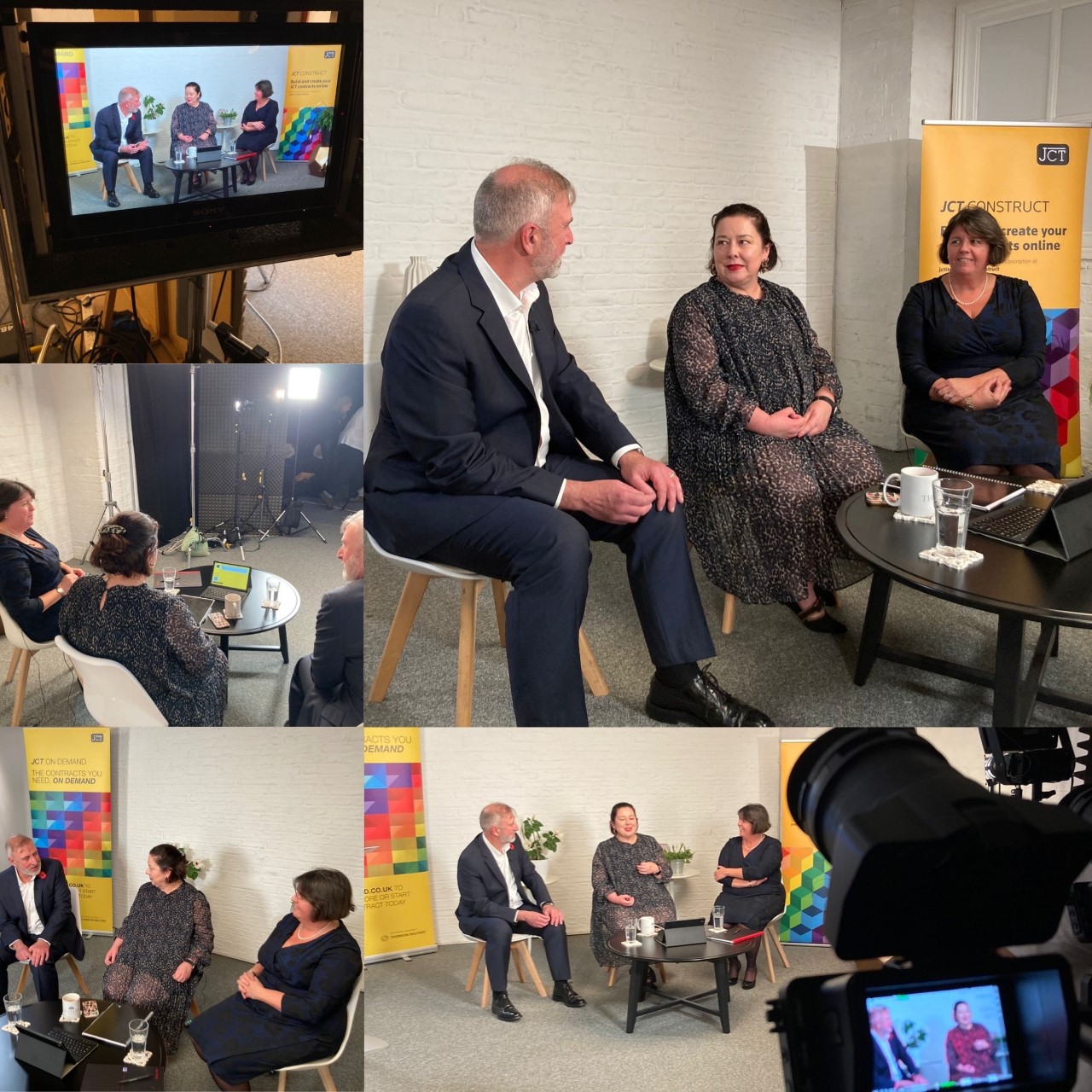Gary Neal, head of fire at Skanska UK, delivered a clear set of guidelines to those working in construction to ensure that building projects not only achieve the necessary requirements of the Building Safety Act but also the desired cost and quality outcomes first time, in his JCT Povey Lecture, given on Thursday, 10 November 2022.
In his presentation, ‘Building Safety Act: practical steps to compliance in construction’, Gary explained the four main areas of focus of the Act, namely, the changes to general building safety rules, introduction of a new regime for higher risk buildings, changes to the fire safety regime, and the extension of limitation periods.
He also described the key role of the Building Safety Regulator and its important function across three key gateways concerned with the planning, design and construction, and occupancy phases.
Throughout, Gary highlighted the importance of competency at all levels; in making sure competent people with relevant experience are employed, that design is carried out correctly, that the correct and compliant products are selected and installed by competent teams, and that inspections are carried out based on data competently compiled and stored from the project’s inception.
He also stressed that compliance with the building regulations was not only compulsory but should be seen as a minimum requirement and that cutting corners on compliance not only risks a building’s safety but increases costs as a result of having to rectify poorly designed or installed works.
Above all, Gary reinforced the point that culture and behavioural change was at the centre of achieving long-term benefits:
“What this really comes down to is culture; fire safety and delivering excellence is the heart of […] everything we do.
“For those of us with this in mind, it is likely that we will never feel the breath of the Building Safety Act upon us, leaving those in our wake to suffer the long-term implications.”
Following his presentation, Gary joined a panel discussion and audience Q&A hosted by JCT chair, Karen Kirkham, and featuring Amanda Long, chief executive of Building a Safer Future.
Amanda reiterated Gary’s point about culture to stress that leadership and reinforcing building safety as a ‘business as usual’ culture through behavioural change, was something that the industry needed to embrace, as it is lagging behind other industries such as rail, oil and gas, and nuclear, in terms of managing its role as a ‘major hazard’ industry.
Watch On Demand
The full presentation, panel discussion and Q&A, which recorded JCT’s highest registration and viewership for a Povey Lecture to date, is available to view at https://corporate.jctltd.co.uk/povey-lecture-2022.
You can also find out more information, including the following:
- Download the presentation slides
- Access relevant links, including more about Skanska UK, the Building a Safer Future Champions programme, and the Get It Right Initiative (GIRI)
- Gary Neal and Karen Kirkham’s follow-up Q&A, which covered questions that weren’t able to be aired during the live broadcast.
About the JCT Povey Lecture
The JCT Povey Lecture is an annual event at which an eminent person is invited to give their thoughts on significant matters that are relevant to the construction and property industry. The purpose of the lecture is to stimulate thought and encourage ways of continuing to improve the quality and value of construction output.
The event was inaugurated in 2003 to acknowledge and pay tribute to Philip Povey, who served JCT for fifty years.
The JCT Povey Lecture is delivered as part of JCT’s ‘digital first’ approach, which encompasses a range of digital-only and hybrid activities. It provides a flexible and interactive way for construction professionals across the industry, and regardless of location, to access high quality content from industry experts.

